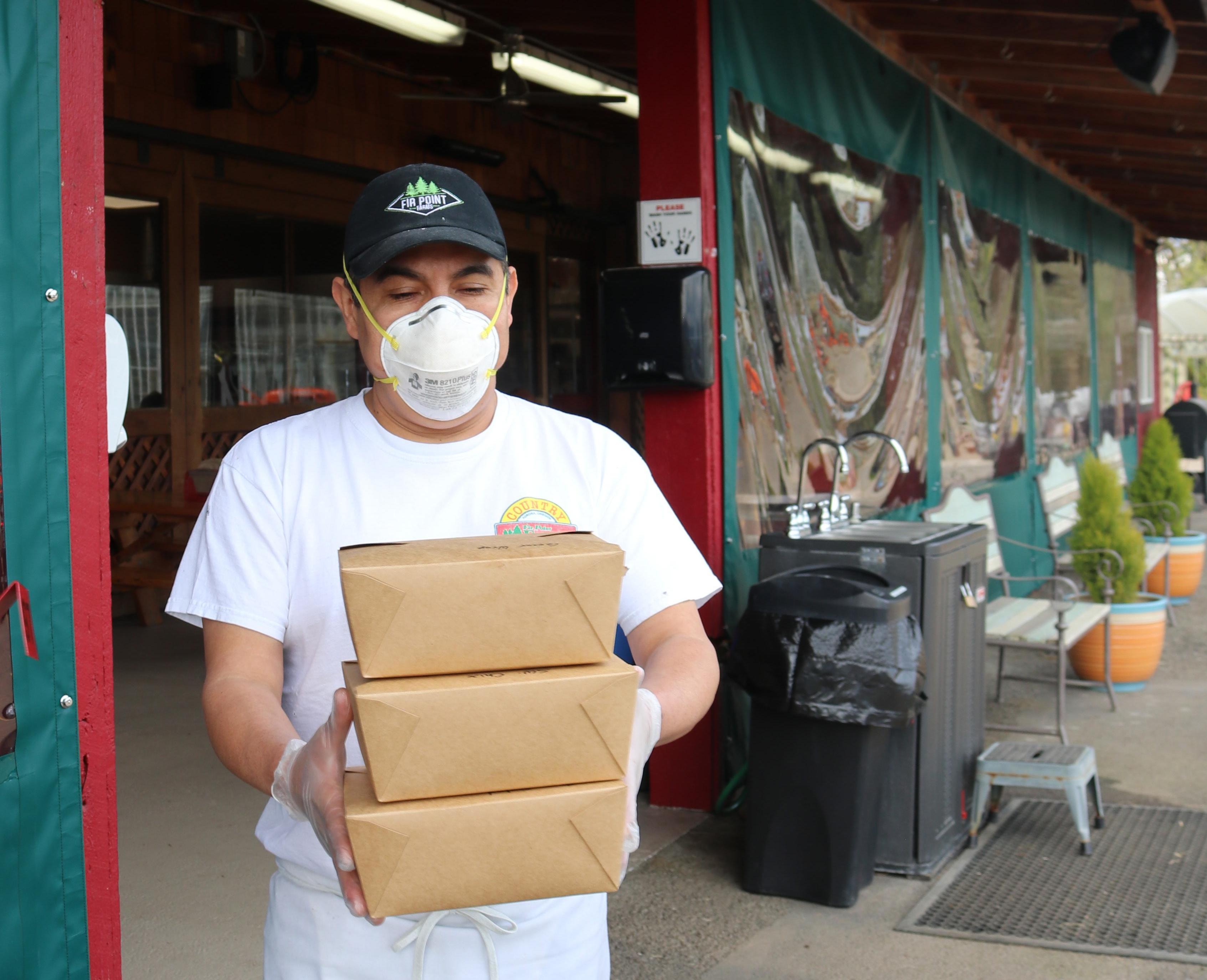
4 minute read
Community Support
The Cornerstone of the New Consumer Confidence
Regional treasure Country Grains at Fir Point Farms, Aurora
Advertisement
One year ago, in a sudden turn of events, every restaurant or bar owner, operator, manager, and employee was shaken to the core with the words “lock down.” These shockwaves went out through communities across Oregon, leaving everyone in our state wondering how their personal favorite spot would survive.
This undeniably caused a massive decline in consumer purchases of food and beverage, with individually-owned restaurants representing one of the hardest hit sectors. Even after lockdowns were lifted and partial capacity was allowed, the Oregon Office of Economic Analysis1 reported that May 2020 spending had dropped 33 percent year over year, a trend that has continued as the pandemic ceases to subside. However, something fascinating and extremely hopeful has emerged from the ashes of so much uncertainty and decline: the engagement of communities in sustaining the life of their local restaurants. Purchasing food and beverages from your local watering hole is now less about the pristine execution and style we are accustomed to. A shift in focus has taken center stage. The consumer can now be a part of something larger; this is their opportunity to impact the world and future in front of them. They have the power to vote with their dollar and keep the places they love alive during this crisis. Driven by a renewed sense of community, restaurants are now able to engage consumer confidence in a whole new light, for the immediate future and hopefully for years to come.


Stay Connected by Subscribing to ORLA eCommunications.
Get the latest hospitality industry news, event details, and offers. ORLA provides different types of email subscriptions to make sure you get exactly the info you are looking for. Tailor your subscriptions at OregonRLA.org/subscribe.
CHOOSE THE RIGHT EMAILS FOR YOU
Insider: Monthly news and information (members only) Alert: Urgent call to action or industry alerts Announcement: Industry announcements Events: Industry and association activities Industry Offers: Sponsored messages, deals and discounts
Country Grains at Fir Point Farms, Aurora

Prior to the COVID pandemic, consumer confidence has primarily relied more clinically upon customers’ “feelings about current and future economic conditions.”2 All expectations in this arena have been bucked in 2020. In the past, downturns resulted in smaller dining budgets. In stark contrast, 2020 saw many households become more intentional and habitual about their dine out habits. Customers throughout the State of Oregon, as well as nationwide, are making personal commitments to patron (whether dine-in, take-out, or delivery) local restaurants and show their loyalty. Social media pages focusing on this topic popped up and overnight have gained thousands of followers to support local eateries. This flies in the face of standard buying habits in restaurant consumers, not only contradicting typical household budgeting, but doing so at a time when so much is insecure: staffing, training, adjusted hours, supply chain and new service models.
Communities around the nation are sounding a rallying cry, not only touching many a restaurant owner and employee, but also bringing something new to the forefront for us as an industry: the customer’s confidence comes not simply from our deliverables, but equally from their active engagement in our success.
So how do we maintain this new type of consumer confidence as we progress into the future? Ultimately customers want to see their old favorites come back, stronger and better than before. Consumers have been dreaming about that day when they get to enjoy their favorite burger, pint, or bowl of pasta at that special eatery that they helped save. We cannot disappoint them. To nurture this goodwill and confidence we need to focus on four values that will always ring true with our patrons.
1. Be Consistent. Part of what has been so trying for our industry and consumers is the lack of consistency over the past year. Every time a customer voted to spend their dollars at our establishments, they said, “I believe in getting to eat here again someday.” That anticipation has been building now for a long time. Making sure we are doing everything we can to update and hone our plans, training, and organization to be as consistent as possible will ensure these expectations are met and exceeded.
2. Be Bold. Don’t be afraid to implement new systems and solutions. Restaurants have developed new strategies that are increasingly more profitable or efficient throughout this process. Even if it delivers a somewhat different experience for our customers, with strong communication we can build even more trust with our patrons by showing them we learn and grow toward a brighter future.
3. Look Ahead. Taking stock of all we have learned about our businesses over the past year and preparing for a worst-case scenario in the future will instill needed confidence in both our guests and us as operators. Now is the time to plan and prepare what we have learned for future pivots, readying ourselves for whatever changes or issues we are confronted with.
4. Be Transparent. Tell your story! Continue to engage and reengage your client base with stories of victory, community, growth and the effort you and your teams are displaying to provide the best for your patrons. Emails, blurbs on your menu, website testimonials, and one-on-one conversations are great strategies to initiate the conversation. However you engage, do it loud and proud.
After a year full of lockdowns, hardship and pivots, I hope as we move forward our local restaurants, communities, and customers will remember this time of connection as a small bright spot, leaving behind the long-lasting mark of confidence, even as this time fades into a distant memory. NATALIE SHEILD, TOGATHER
RESTAURANT CONSULTING
1 https://oregoneconomicanalysis.com/2020/07/01/bar-and-restaurant-demand-graph-of-theweek/
2 Oxford Languages https://languages.oup.com/google-dictionary-en/










